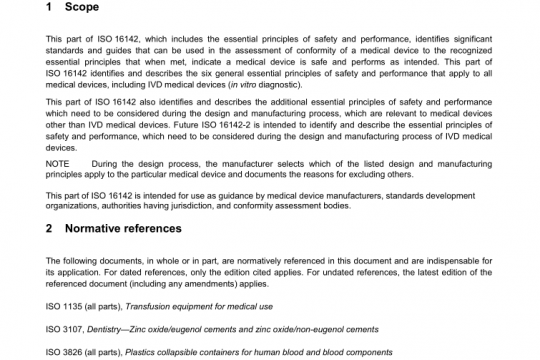AAMI TIR16 pdf free download
AAMI TIR16 pdf free download.Microbiological aspects of ethylene oxide sterilization.
3 Process and equipment characterization 3.1 Sterilization equipment Guidelines for equipment selection can be found in AAMI TIR1 5:2009 and EN 1 422. Careful selection of the sterilizing equipment and development of the facility design will enable a manufacturer to process a product safely and effectively. 3.2 Process characterization — Physical parameters 3.2.1 Introduction The variables that have a significant effect on the lethality of an ethylene oxide (EO) sterilization process are ethylene oxide (EO) concentration, relative humidity (RH), temperature, and EO exposure time. EO concentration and RH may be calculated as prescribed in AAMI TIR1 5:2009, or they may be directly measured. It is recommended that evacuation and injection rates be established to define their effect on the cycle lethality throughout the program. The use of controlled evacuation and injection rates minimizes the potential for package and product damage. These rates should be incorporated in the final process specifications as appropriate for chamber parameters. It is also important to remember that the actual depth and rate of evacuations might be different for the air-removal versus the sterilant-removal phases, because the product and packaging have been exposed to increased temperature, humidity, and sterilant levels prior to the sterilant-removal phase. 3.2.2 EO concentration Common practice is to develop and validate cycles using an EO concentration ranging from 400 to 650 milligrams per liter (mg/L), because concentrations in this range have been found to achieve microbiological lethality for most products within a reasonable and practical exposure time. When lower EO concentrations are necessary due to product or process considerations, the exposure time may need to be increased to achieve the same lethality; however, the time increase may be mitigated if the temperature of the process can be increased sufficiently.It is important to ensure that the EO concentration can be defined for the exposure period(s) as determined during the cycle development. Depending upon device and packaging materials and design, a significant amount of EO can be selectively (as opposed to any other gas) adsorbed or absorbed by the load. This can result in a decrease of the EO concentration in the head space (chamber volume surrounding the load) of the chamber. If the original chamber pressure is desired throughout exposure, the chamber pressure can be maintained by use of either EO or inert gas make-ups or additions. When an inert gas is used to maintain the chamber pressure, it is important that the chamber recirculation system be sufficient to minimize risk and magnitude of stratification of the inert gas (e.g. nitrogen) and EO gas. When EO gas is used to maintain chamber pressure and EO gas concentration within specification limits, aeration of the load may be longer than when using nitrogen to control chamber pressure. When using nitrogen gas to control chamber pressure during EO dwell, consideration should be given to the potential effect of reduced EO concentration, especially during the second half of the cycle, which could affect the lethality rate. In mixed sterilant gas processes, the makeup gas will replace only a fraction of the EO absorbed, and the EO concentration in the chamber could decrease with time. In both cases, calculation of final EO concentration by chamber pressure and temperature might not reflect the actual EO concentration in the void volume of the chamber. Calibrated EO sensors can be used to monitor EO concentration in the head space of the chamber. It is recommended that the minimum and maximum gas concentrations used in cycle development be used for validation of the sterilization process. If the validation is successful, these limits should be specified as the upper and lower control limits for routine sterilization.AAMI TIR16 pdf download.
Other IEC Standards
-

ANSI AAMI ISO 16142-1 pdf free download – non-IVD medical devices and guidance on the selection of standards
AAMI standards list DOWNLOAD -

ANSI AAMI ISO 16142-2 pdf free download – General essential principles and additional specifc essential principles
AAMI standards list DOWNLOAD


